Types of domestic home lifts
A homelift is a type of elevator used in a residential home. It is an alternative to a stairlift, which may be more suitable for those in wheelchairs and with limited mobility.
Domestic homelifts enable ease of movement and independent living. They make upper floors accessible, allowing users to enjoy their whole home. In many cases, a homelift facilitates ageing in place, meaning the user can remain in their home and community, avoid institutional care, and maintain their autonomy.
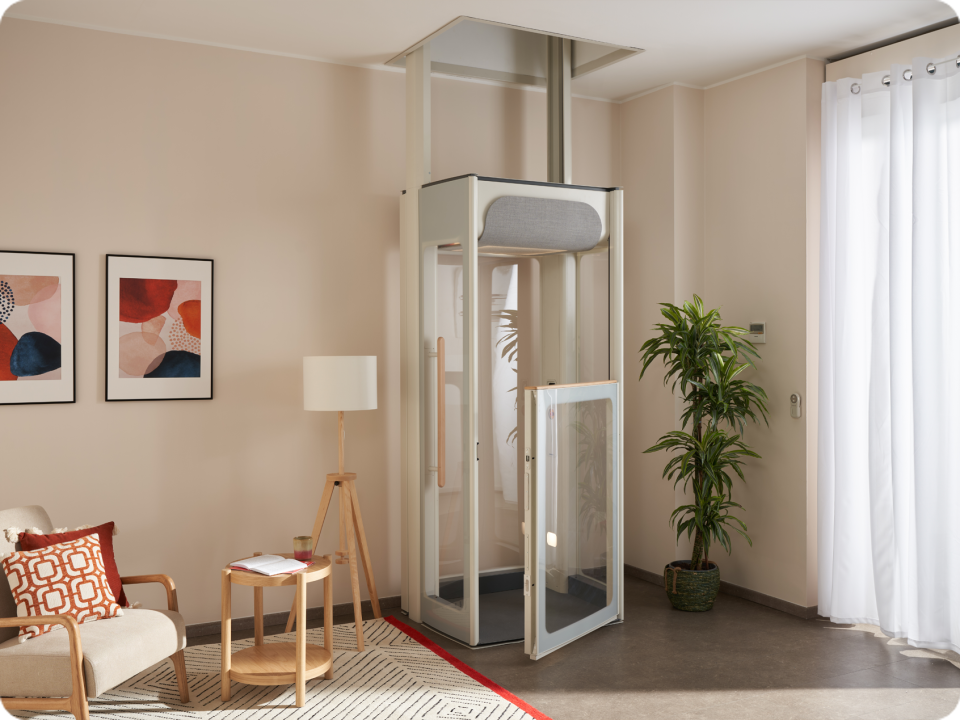
Single person home lifts
Compact and minimalist, a single person homelift is designed to fit anywhere in your home, regardless of the size of your space.
- For use by 1-2 people standing up.
- Compact.
- It can be installed almost anywhere.
Two person home lifts
A two person homelift is designed to take up minimal space in your home.
- Sleek and compact.
- Designed to fit into most spaces.
- Good for couples or individuals with in-home care.
- For use by 1-2 people standing up.
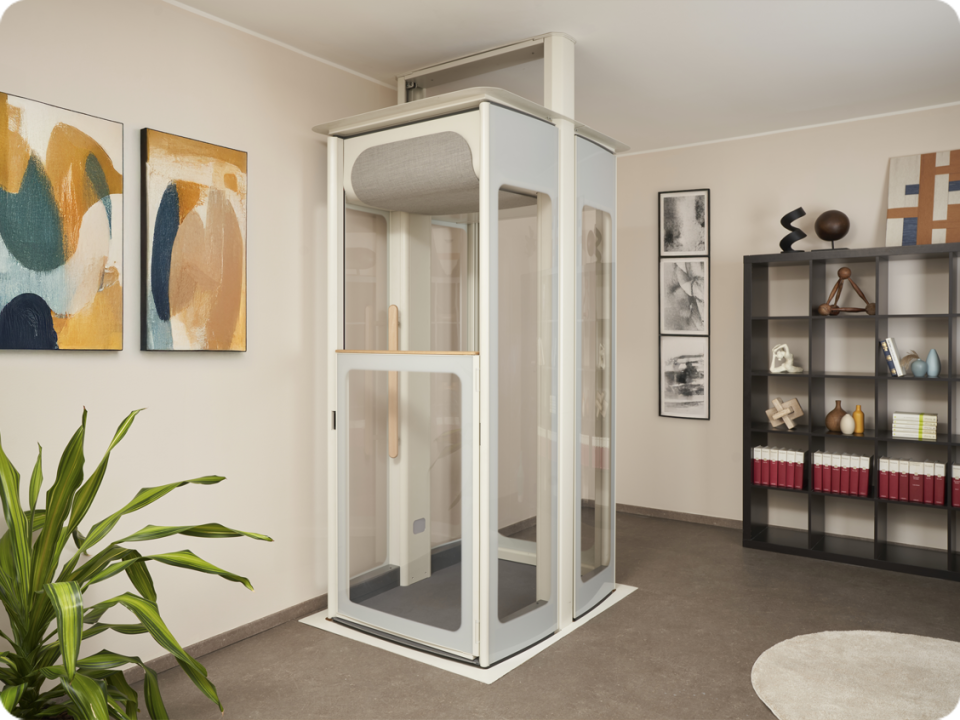
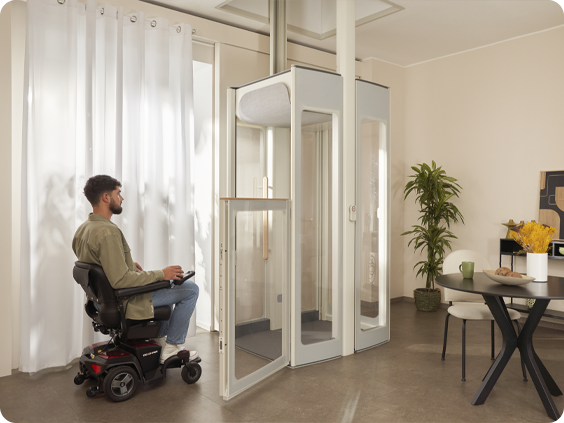
Wheelchair home lifts
A wheelchair homelift is ideal for people who have mobility support within their home, or for those who want a future-proof solution.
- Designed for one user in a wheelchair.
- Accessibility features.
- Safe and reliable.
- Most can fit one wheelchair or up to three people.
Hydraulic home lifts
Hydraulic homelifts operate using an electric pump, which pushes fluid through a jack and piston mechanism to lift the car. Although effective, this system can create several inconveniences:
- Lift shaft optional: Can operate with or without a dedicated lift shaft.
- Bespoke designs: Customisable to match individual requirements.
- More extensive building works: Typically requires additional construction efforts and modifications.
- Noise nuisance: Often produces noticeable noise during upward movement, causing disruption in quieter settings.
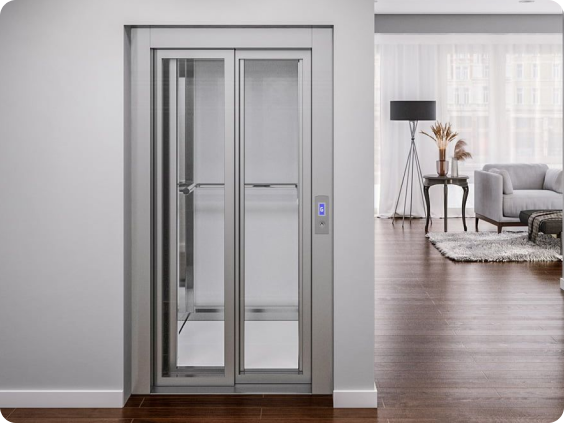

Electric home lifts
Electric homelifts are much smaller than hydraulic homelifts.
- Suitable for the majority of homes, no matter how small.
- They are self-supporting, so they do not require any structural work to install.
- It can be installed in one day.
Multi floor homelift
Multi-floor homelifts provide safe and convenient access across three or more storeys.
- Ideal for townhouses, split-level layouts and houses with attic conversions and basements.
- Provide a safer alternative to the often narrow and steep stairs in multi-floor homes.
- Many compact or more spacious options.

Factors to consider: Finding the best homelift for you
Space requirements
It is important to ensure that the lift will fit in the chosen space. There are larger and more compact homelift options to choose from, which will suit different space configurations.
Weight capacity
Think about how many people will need to use the lift at one time, and if they have mobility aids such as a wheelchair or if it will be needed to carry other heavy items.
Aesthetic options
There are many designs from various providers to choose from to fit in with your home interior.
Who would benefit from a home lift?
Finding the best homelift option is also about future-proofing your home. Thinking ahead and considering how many people may benefit from a homelift in the future is a helpful exercise when making your selection.
Comparing costs and installation
The price of a homelift will differ drastically depending on a number of factors, including the style, size and quality of the model you choose. These factors will also influence the length of time it will take to install, which can be anywhere from one day to a week.
Choosing the right homelift to suit your requirements will take a lot of research. Continue your journey to the right solution by taking a look at the specific lift types or request a comparison to help with your decision-making.
FAQs
What is a home lift?
A homelift is an in-home elevator. It is different from a stairlift as it is independent of the stairs and travels straight up and down to two or more floors.
Why purchase a home lift rather than a stair lift?
A homelift is more versatile than a stairlift because it can accommodate multiple people, support wheelchair users, and assist individuals in avoiding the struggle of carrying heavy objects up stairs, such as washing baskets. A stairlift is especially more convenient for people in wheelchairs because they can remain in the wheelchair the whole time and continue using it on a different floor.
Who would benefit from a home lift?
People with limited mobility: A homelift can alleviate the strain for those who struggle with the stairs.
People in wheelchairs or powerchairs: A homelift can be more convenient than a stairlift as the user can stay put. It makes the process of travelling to and from the upper floors seamless.
In-home carers and family members: A homelift can help home carers by allowing an individual to move around independently, reducing the need for intervention from another person.
Independent individuals who need support with everyday tasks: Sometimes, fairly active people need help with the stairs when carrying heavy items like washing. A homelift can provide that extra support and safety.
How much power does a home lift use?
Homelifts, particularly the newer models, are very energy-efficient to run. There are many factors which will affect the electricity usage of a homelift, including the size of the lift, the weight being carried, the amount it is used, and the specific model you choose.
In general, you can expect a typical homelift to use around 1 kilowatt hour of electricity per day, which is significantly less than the majority of other household appliances. In fact, it costs roughly £1 a month to run.
Is a home lift noisy?
The noise level of a homelift varies depending on the quality of the materials and mechanisms involved. In general, though, modern homelifts are designed to be quiet. A homelift is designed to be quiet enough so that others in your home and your neighbours shouldn’t be disturbed.
How long does it take to install a home lift?
There are several factors which will influence the length of time it takes to install a domestic homelift. These include the type of homelift you chose, how many floors it will cover, and the layout of your home. In general, you can expect a homelift installation to take from as little as one day to a week.
What is the process of having a home lift removed?
It is important to have a homelift removed safely.The process requires expert knowledge and equipment. Having a homelift removed will involve the dismantling and disposing of the materials and the restoration of the area to a safe state. It is important to have this carried out by qualified professionals.
How much does a through floor home lift cost?
For a good quality homelift, you can expect to pay anywhere from £15,000 for a smaller model to £20,000 plus for larger ones.
Do home lifts require servicing?
Like other household appliances, a homelift should have a yearly service.
Does a through floor home lift require planning permission?
A through-floor homelift does not typically require planning permission in the UK.
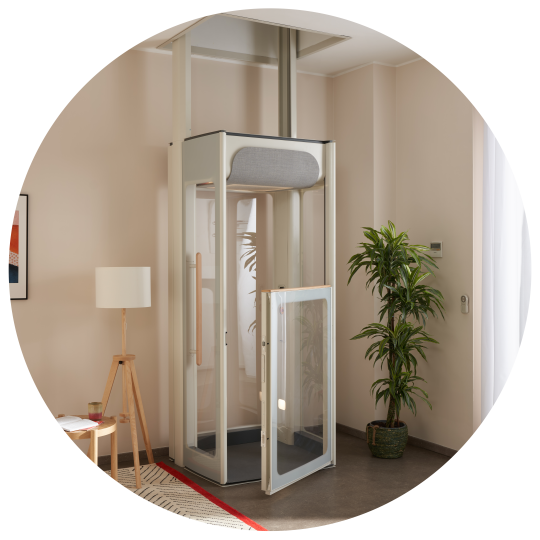
Enhance your comfort and efficiency.
Discover the ease and sophistication of having a home lift in your home. Elevate your property’s worth while improving accessibility and convenience for all residents. Bid farewell to stair climbing and welcome seamless transitions between levels. Embrace a home lift for a smoother, more convenient lifestyle that simplifies daily activities and enhances overall living experience.